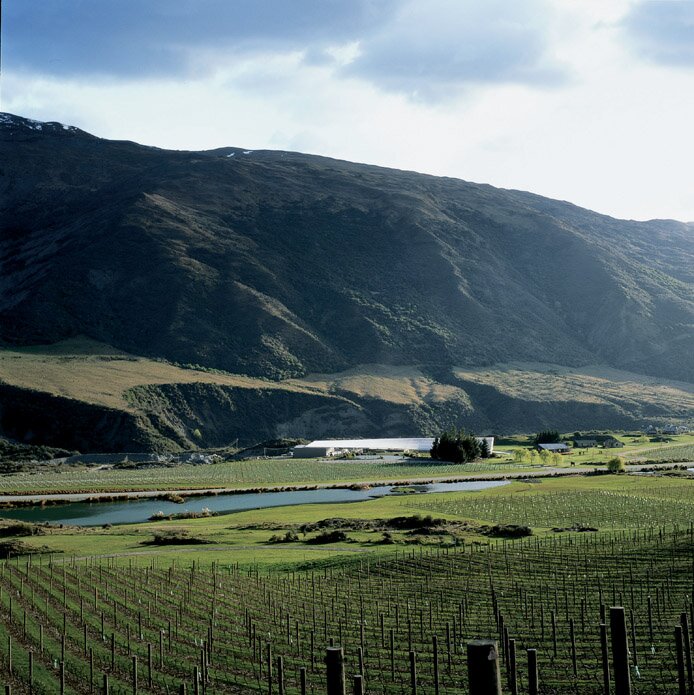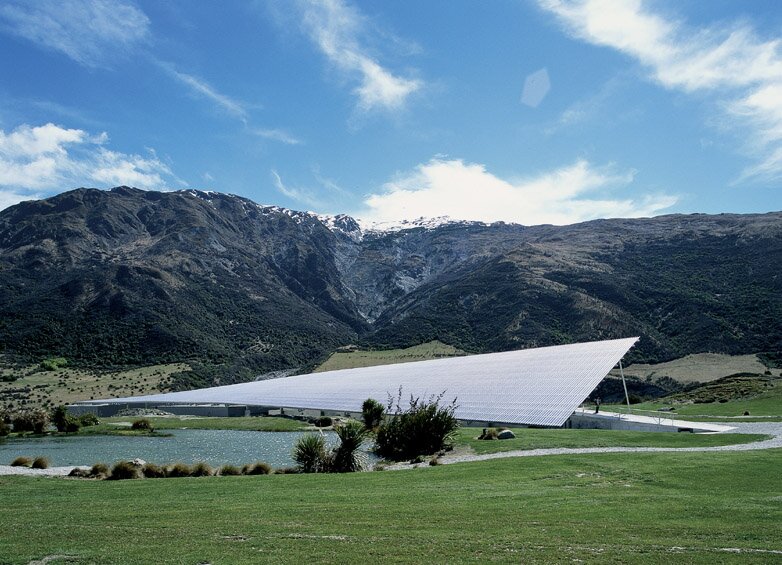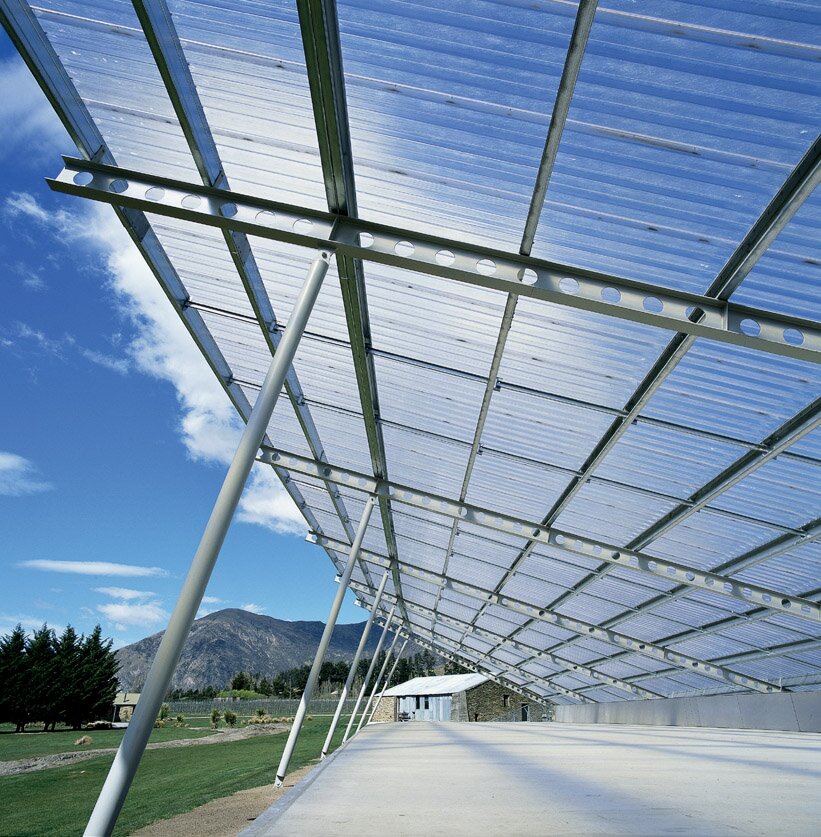Emerging Architecture Awards
Winery
Gibbston Valley, Central Otago, New Zealand

|

|

|
The Peregrine Winery is one of these. On the terraced floor of the Gibbston Valley, below the often snow-capped mountains, the site is bounded to the north by the Kawerau Gorge, one of the most dramatic moments in a remarkable part of the country. In contrast, the winery is calm, smooth, ordered. In Edmund Burkes terms, it is an island of human-made beauty in the middle of the natural sublime landscape. Rows of vines in carefully ordered vineyards spread out over the valley from the central building, which is itself a clearly organized diagram of the processes involved in wine-making.
The process and the building are both linear. And the whole string of events is contained under a long curving translucent roof that both unites the stages in wine production and becomes a shining emblem of the place. Visitors approach from the south, and are introduced down a ramp to the final stage in the production process. You can taste the products in the barrel room where the wine is stored before despatch, a 40m long modern version of the traditional viticultural cave, in which oak barrels stretch into the distance. After this introduction, visitors are encouraged to stroll on the terraced roof, where views of the Kawerau Gorge are framed under the translucent canopy floating overhead. It is made of deeply corrugated composite glass-fibre sheeting supported on galvanized purlins, which themselves bear on propped frames made of universal beams with their webs drilled out. This 140m long roof is not just a picturesque feature: it obviates the need to allow for snow loads on the building below, and removes most of the solar heat gain from the production rooms, where stable temperatures are important. Digging the barrel room and the internal fermenter chamber into the ground also aids temperature control. An external fermentation area extends to the east of the main linear route under separate canopies, and at the junction of the two axes is the workpad, where grapes and barrels are manipulated.
But in the end, the building did not earn its award for careful organization of the production process (though that was obviously not unimportant). The huge, calm gently curving silvery canopy floating over the massive base, all set among the orderly vineyards, makes an irresistible and poetic vision of civilization amid wild nature, and the jury was unanimously convinced by it.
Architect
Architecture Workshop
www.archwksp.co.nz
Project team
Christopher Kelly, James Fenton, Tim Hervey, Steven Waterman, Adam Thornton, Gareth Alley, Russel Lund
Structural engineer
Dunning Thornton
Photographs
Patrick Reynolds